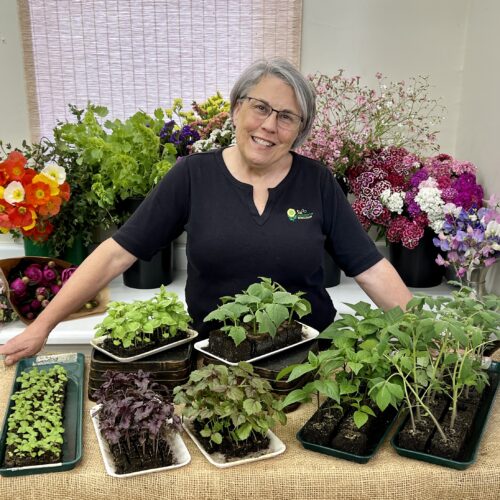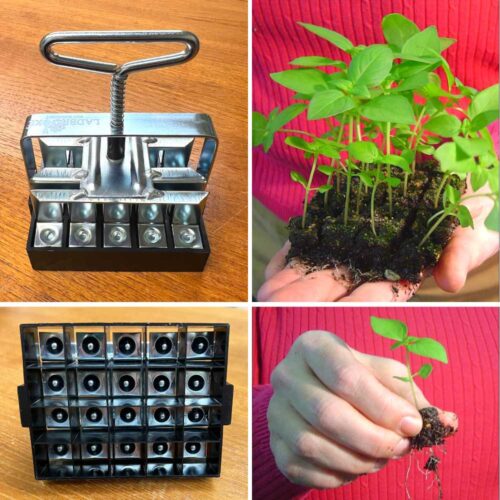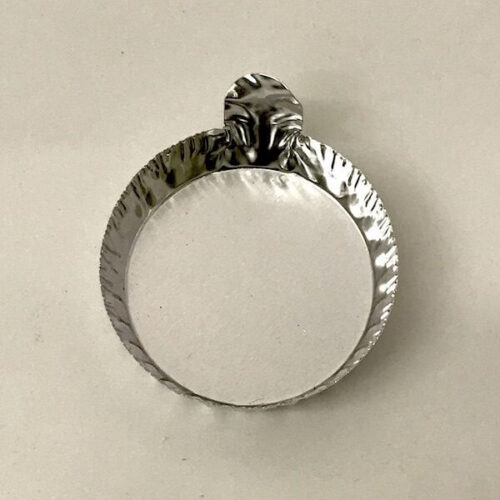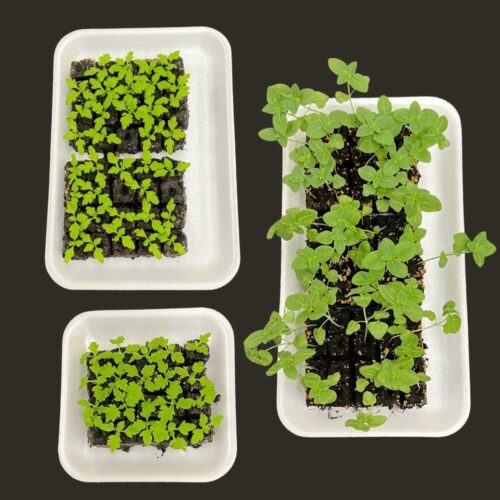Celebrating Celosia
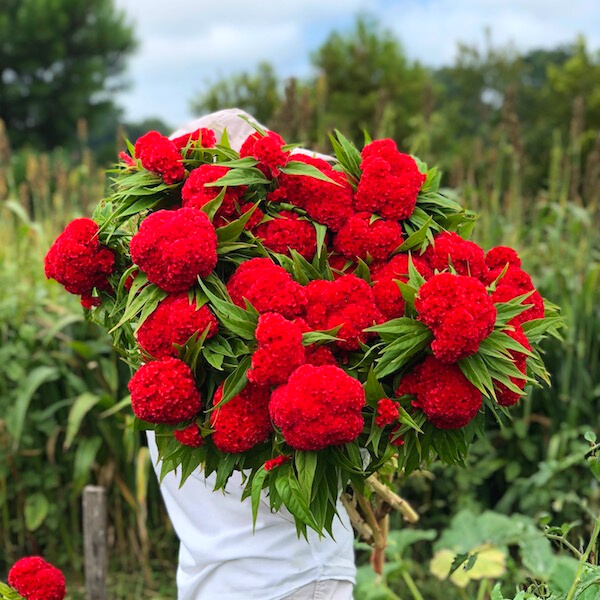
If there’s one flower that loves the heat of summer it’s celosia. Everyone should grow it – from the home gardener looking to add a unique flower to their garden to the cut flower farmer looking for a cash crop to wow your florists and farmer’s market customers all summer long. If you’re looking for a family of flowers to add bold color and awesome texture to your garden, arrangements, and sales outlets, celosia is what you’re looking for! In addition to being a fresh flower that florists and designers love and great for market bouquets, celosia is also in high demand as a dried flower for wreaths and crafts.
Celosia is one of Lisa’s favorite warm-season tender annuals to grow and was one of her top five cash crops when she farmed during her years of high production. I’ll never forget taking our first crop of celosia to our florists and farmer’s markets. People asked me if I spray painted the flowers because the colors were so vibrant and bold!
This family of flowers (Celosia argentea) has three very different types: the brainy cockscomb (the Cristata group), spiky plumes (the Plumosa group), and the feathery, wheat-style blooms (the Spicata group). All three types couldn’t look more different in a bouquet. Let’s take a quick look at each group.
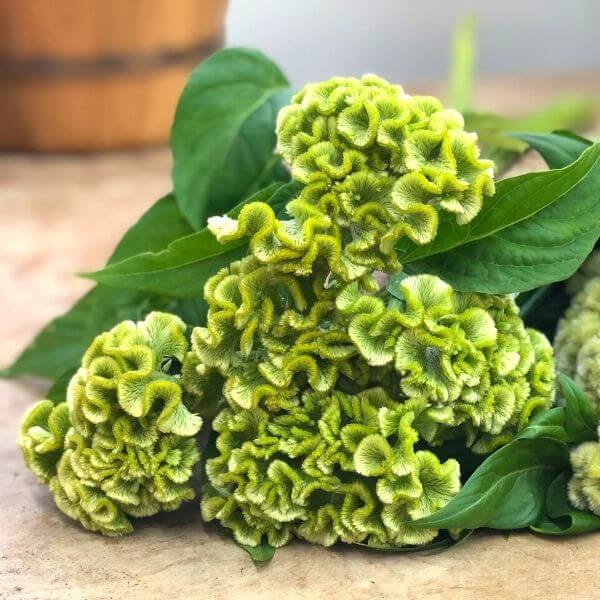
Celosia cristata
This celosia, commonly referred to as cockscomb, looks like a brain and has a velvety texture. In addition to adding bright color and texture to bouquets and design work, it’s a champ at bulking up mixed bouquets for markets and grocery stores. Lisa says this flower was a workhorse when it came to making weekly bouquets for her grocery store accounts. TGW sells over 16 types, including two single-stem varieties called Act Verda Green and Spring Green. For branching cockscomb that you can pinch for more stems, check out the Chief and Cramer’s varieties. Cristata types take the longest to grow from seed to bloom (100-120 days vs. 90-95 days for other varieties) so get these plantings in early and plan your successions of this variety back from your first fall frost date accordingly.
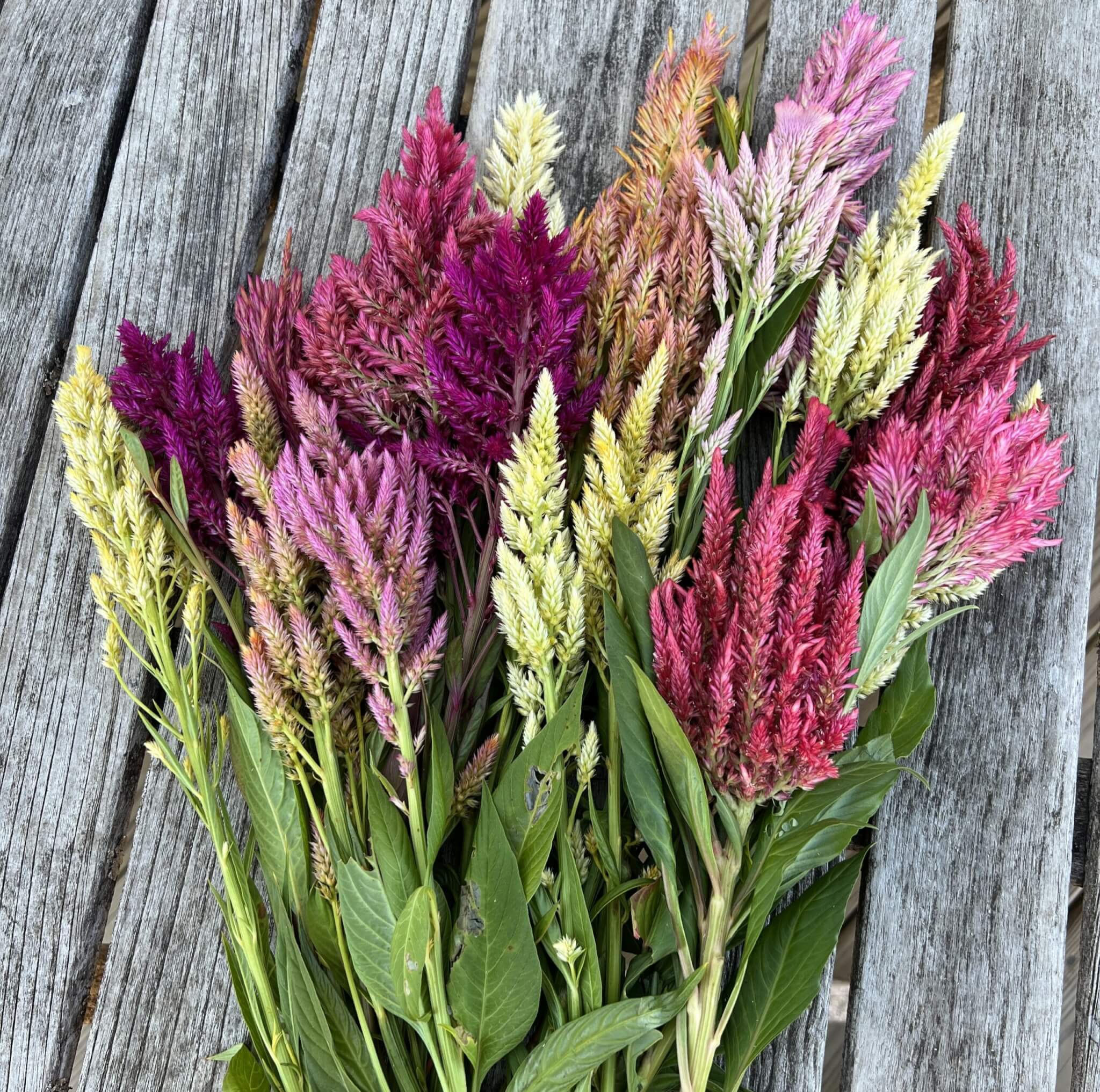
Celosia plumosa
Commonly called the plumed celosia, these varieties have soft, feathery stems that serve as bouquet filler and add a nice wavy movement. One of Lisa’s favorites is Sunday Orange and TGW’s newest variety, Texas Plumes. TGW offers over 8 varieties to choose from in this family.
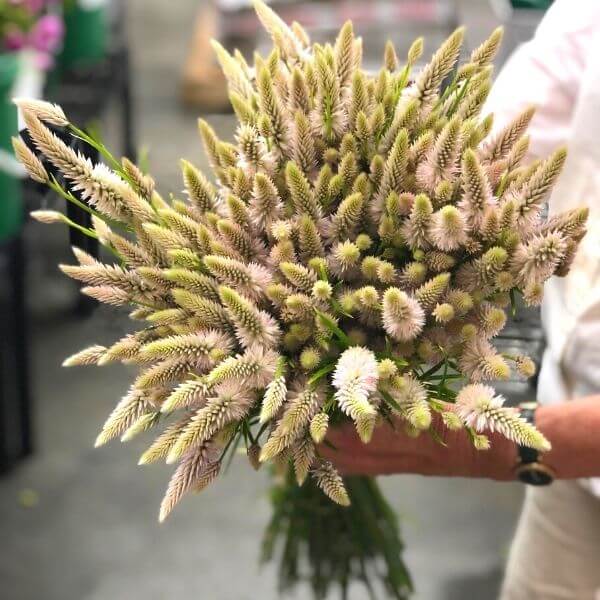
Celosia spicata
Last but not least, the celosia in this group has a spiky feel to it and is coveted for the texture it adds to bouquets and design work. Check out Flamingo Feather and this Celway variety.
Celosia Seed Starting & Care
When it comes to seed starting, the number one reason celosia fails to germinate is a lack of consistent moisture and too low a soil temperature. It can handle higher soil temperatures for germination. Lisa recommends covering your celosia seed starts with wide-weave burlap to keep the plants moist while allowing for air circulation.
Celosia doesn’t tolerate cool temperatures when it is in the growing stage and grows best when nighttime lows are 60-65°F. This is important, especially when you are planning your first summer planting. Don’t plant this crop too early in the summer because cooler temps can cause premature flowering (known as “bolting”). Sometimes people email TGW asking why their transplants are bolting in the field: overnight temperatures below the 60-65°F range is the reason.
If you want to learn more and hear Lisa talk about celosia varieties and the seeds sold by TGW, check out the replay of the 5/5/23 Live Shopping show, where Lisa goes deep on this amazing family of flowers. And in her book, Vegetables Love Flowers, Lisa goes into detail about starting and growing celosia from seed in a three-season cutting garden.
Celosia sometimes makes me think about family: you see many differences and wonder how we are all related. But like family, it’s those differences that make us all beautiful and come together to make a bigger whole that is special. Check out the special flower that is celosia!
About The Author: Anne Morgan is our Customer Service Coordinator at The Gardener’s Workshop and the head grower at Franklin Flower Farm in Macon County, NC. Anne can be reached at [email protected].


